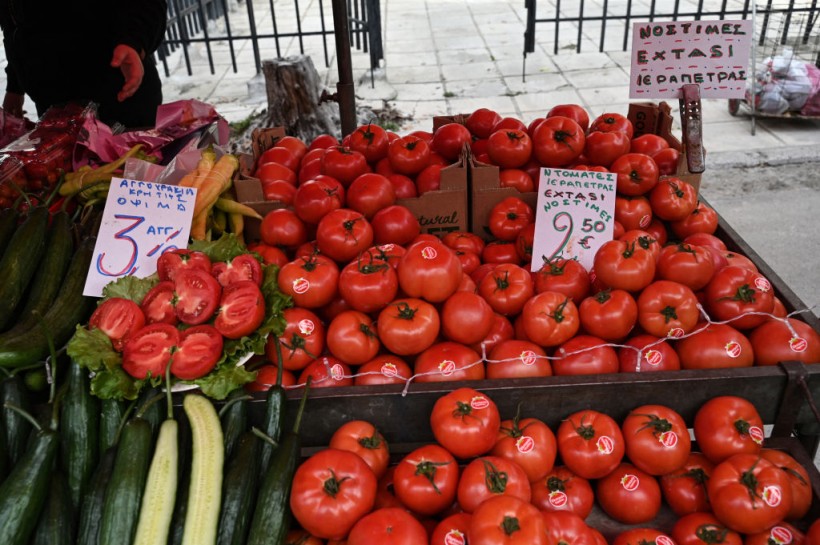Tomatoes are one of the most popular and versatile crops in the world, but they are also vulnerable to droughts, which are becoming more frequent and severe due to climate change.
However, a new study by researchers from the University of California, Davis, and the University of California, Riverside, has revealed how tomato roots can cope with water scarcity and even improve their growth under stress.
The findings could have implications for other crops and for food security in the face of global warming.
Tomato Roots Have a Mind of Their Own (Photo : SAKIS MITROLIDIS/AFP via Getty Images)
(Photo : SAKIS MITROLIDIS/AFP via Getty Images)
The study, published in the journal Nature Plants, showed that tomato roots can sense and respond to drought independently of the shoots, the above-ground parts of the plant.
The researchers found that when the soil is dry, the roots produce more of a hormone called abscisic acid (ABA), which triggers a series of changes in the root cells.
These changes include increasing the production of lignin and suberin, two substances that make the cell walls stiffer and more waterproof, and reducing the size and number of pores called stomata, which regulate gas exchange and water loss.
These adaptations help the roots retain water and prevent wilting, but they also have another surprising effect: they stimulate the growth of the roots.
The researchers discovered that ABA activates a gene called SlERF6, which in turn activates another gene called SlEXPA2.
This gene encodes for a protein that loosens the cell walls and allows the cells to expand and divide, resulting in longer and thicker roots.
The researchers also found that SlEXPA2 is expressed more in the root tips, the regions where most of the growth occurs.
The researchers confirmed that these responses are specific to the roots and do not depend on signals from the shoots.
They did this by using different types of plants: some that had normal shoots and roots, some that had their shoots removed, and some that had mutant shoots that could not sense or produce ABA.
In all cases, the roots behaved the same way when exposed to drought, indicating that they have their own drought-sensing and response system.
Also Read: From Food Waste to Cars: Scientists Create Sustainable Tires Using Eggshells, Tomato Skin
Helping Other Crops Survive Drought
The researchers also compared the responses of tomato roots to those of two other crops: rice and Arabidopsis, a small flowering plant that is widely used as a model organism in plant biology.
They found that the genes and pathways involved in root drought adaptation are highly conserved among these species, suggesting that they are common to many plants.
This means that the insights gained from studying tomato roots could be applied to improve the drought tolerance of other crops.
One of the possible applications is to use genetic engineering or gene editing to enhance the expression or activity of the genes that promote root growth and water retention, such as SlERF6 and SlEXPA2.
Another possibility is to use selective breeding or natural variation to identify and select plants that have more efficient root systems.
The researchers also suggest that manipulating the soil moisture or the irrigation regime could be a way to stimulate the root responses and improve the crop performance under drought conditions.
The researchers hope that their study will contribute to the development of more resilient and productive crops that can cope with the challenges of climate change and ensure food security for a growing population.
They also plan to continue their research on the molecular mechanisms and the ecological consequences of root drought adaptation in tomatoes and other plants.
Related article: Researchers Boost Tomato Production to a New Maximum
© 2024 NatureWorldNews.com All rights reserved. Do not reproduce without permission.



![Climate Change is Reducing Dust Levels Worldwide as Arctic Temperature Warms [Study]](https://1471793142.rsc.cdn77.org/data/thumbs/full/70320/280/157/50/40/climate-change-is-reducing-dust-levels-worldwide-as-arctic-temperature-warms-study.jpg)

